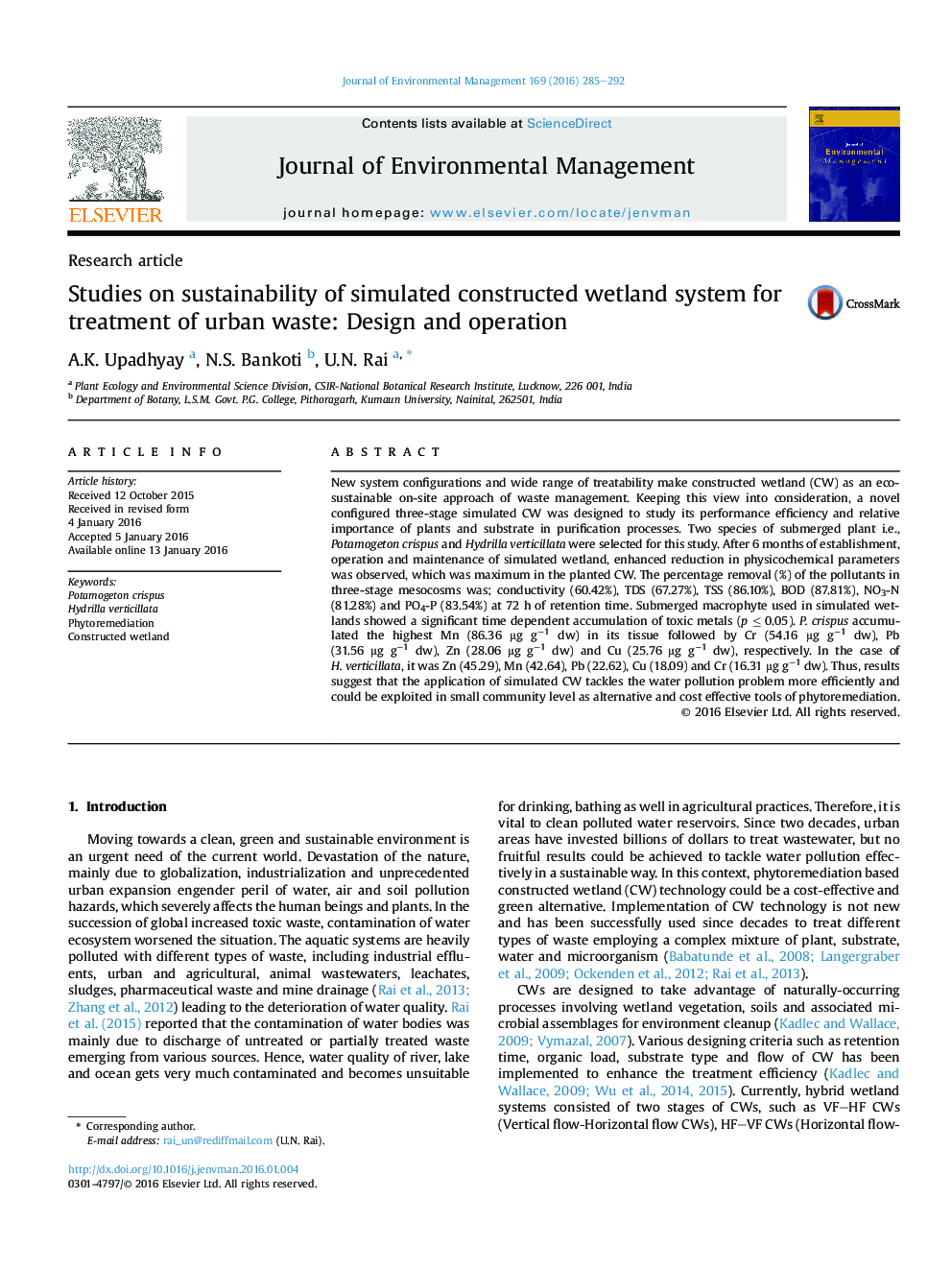| کد مقاله | کد نشریه | سال انتشار | مقاله انگلیسی | نسخه تمام متن |
|---|---|---|---|---|
| 1055459 | 1485243 | 2016 | 8 صفحه PDF | دانلود رایگان |
• Horizontal flow CW with gravel media and plants effectively treat urban wastewater.
• CW decreases BOD up to 87% at 72 h retention time and increase DO to 3.01 mg L−1.
• Gravel media has proved an effective measure for the phosphate reduction in the CW.
• Submerged plant accumulated appreciable amount of toxic elements in the CW.
New system configurations and wide range of treatability make constructed wetland (CW) as an eco-sustainable on-site approach of waste management. Keeping this view into consideration, a novel configured three-stage simulated CW was designed to study its performance efficiency and relative importance of plants and substrate in purification processes. Two species of submerged plant i.e., Potamogeton crispus and Hydrilla verticillata were selected for this study. After 6 months of establishment, operation and maintenance of simulated wetland, enhanced reduction in physicochemical parameters was observed, which was maximum in the planted CW. The percentage removal (%) of the pollutants in three-stage mesocosms was; conductivity (60.42%), TDS (67.27%), TSS (86.10%), BOD (87.81%), NO3-N (81.28%) and PO4-P (83.54%) at 72 h of retention time. Submerged macrophyte used in simulated wetlands showed a significant time dependent accumulation of toxic metals (p ≤ 0.05). P. crispus accumulated the highest Mn (86.36 μg g−1 dw) in its tissue followed by Cr (54.16 μg g−1 dw), Pb (31.56 μg g−1 dw), Zn (28.06 μg g−1 dw) and Cu (25.76 μg g−1 dw), respectively. In the case of H. verticillata, it was Zn (45.29), Mn (42.64), Pb (22.62), Cu (18.09) and Cr (16.31 μg g−1 dw). Thus, results suggest that the application of simulated CW tackles the water pollution problem more efficiently and could be exploited in small community level as alternative and cost effective tools of phytoremediation.
Figure optionsDownload as PowerPoint slide
Journal: Journal of Environmental Management - Volume 169, 15 March 2016, Pages 285–292
